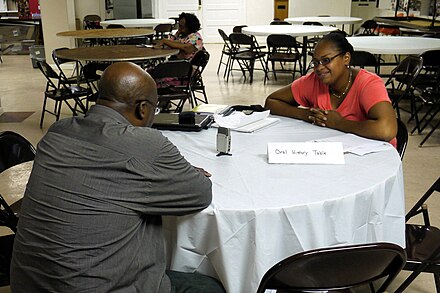In my exploration of curatorial strategies for revisiting history, I have begun to question whether history should only be revisited through archives and objects. The traditional archive—filled with institutional records, catalogues, and official documents—often silences subjective, lived experiences. Oral history, in contrast, emerges as a curatorial tool that challenges written authority, emphasizing memory, storytelling, and collective recollection over rigid documentation.
Unlike museum collections that rely on tangible artifacts, oral histories introduce unwritten knowledge—a process of archival resistance. Artist-curators have increasingly employed this method to restore marginalized voices and disrupt dominant historical narratives. For example, Zarina Bhimji, an artist working with postcolonial memory, records personal testimonies that highlight histories erased by colonial archives, translating them into sound-based installations and films. Her film Yellow Patch (2011) draws upon narratives of migration and colonialism, weaving personal testimonies into its visual and auditory fabric. This approach allows Bhimji to activate personal testimonies as a form of public engagement, demonstrating how oral histories can shape curatorial interventions in social justice issues. Similarly, Lawrence Abu Hamdan‘s forensic audio investigations reconstruct untold histories through sonic evidence and witness testimony, turning memory into curatorial material (Abu Hamdan 2019).
By incorporating oral histories, curatorial practice can shift from passive documentation to active participation, ensuring that overlooked voices are not just preserved but centered in public discourse. Moving beyond institutional archives, oral history-based curating challenges who gets to tell history and how it is remembered.
References
1、Abu Hamdan, Lawrence. 2019. Earwitness Theatre. Chisenhale Gallery, London.
2、Bhimji, Zarina. 2018. Lead White. Tate Britain, London.



7 February 2025 at 16:35
I enjoyed reading the links you create between your own individual project and the inspiration you draw from the Indonesian collective Ruangrupa. The participatory and decolonial approaches Ruangrupa explore can be incorporated to the manifesto and interests of The Sleepwalkers. We discussed this a bit during one of our Planning Meetings but if you want to work with marginalised communities and or explore ideas that have been overlooked by the western art historical cannon you must consider ethics. How do you plan to engage with pluralistic perspectives? Do you plan to focus on one perspective specifically? If so which one? There is a fine line between cultural appropriation, spectacle, and enforcing stereotypes; you need to be mindful and cautious about how you avoid these issues.
Additional materials to consider:
-The publication Beyond the Master’s Tools? Decolonizing Knowledge Orders, Research Methods and Teaching (2022), edited by Daniel Bendix, Franziska Müller, and Aram Ziai.
-Chosen Memories (2023) was an exhibition in MoMa that features 40 Latin American Artists that explore collective memory and overlooked histories. From this you can find various artists of interest and research how some of these individuals question socio-political issues and dominant ideologies.
-The School of Mutants – nomadic curatorial and artist-run collective.
-Research the global art market and curatorial activism as a tool to further explore decolonial practices.
-Decolonizing Art History (2020), Catherine Grant and Dorothy Price.
-Oral histories in relation to queer histories; a Greek documentary Kaliarda (2015) by Paola Team Documentaries.
-Para-Archive.
-Oral tradition and Indigenous knowledge.